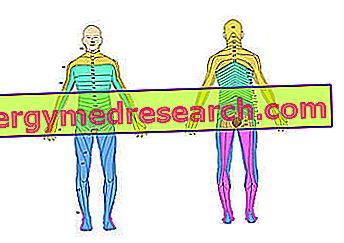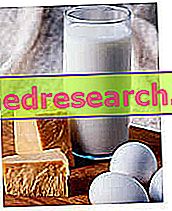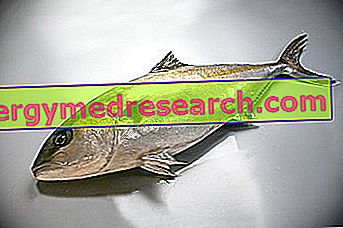Generality
The vasodilators are drugs that exert a relaxing action against the musculature of the blood vessels, with consequent dilation of the same.

Therefore, vasodilator drugs are mainly used in the treatment of hypertension .
More in detail, the arterial dilators decrease the systemic vascular resistance, reducing the post-load on the left ventricle; for this reason, they mostly find use in the treatment of heart failure, angina and systemic pulmonary hypertension.
The dilators of the veins, on the other hand, decrease the pre-load of the heart and reduce the hydrostatic pressure of the capillaries, thus counteracting the onset of edema. These vasodilators are sometimes used in the treatment of heart failure, but are more useful in the treatment of systemic and pulmonary edema caused by it.
The vasodilator drugs can be divided into different classes, both as a function of their chemical structure and as a function of the mechanism of action through which they perform their action.
These classes will be briefly described below.
Antagonists of the Lenti del Calcio channels
These particular vasodilator drugs work by antagonizing the type L voltage-dependent calcium channels (otherwise defined as slow calcium channels), present above all in the smooth muscles of blood vessels. In doing so, these drugs counteract the vasal constriction and induce vasodilation.
This is possible because calcium plays a fundamental role in the smooth muscle contraction mechanisms. Following the increase in the intracellular levels of calcium ions, in fact, these same cations form a complex with calmodulin, a particular type of plasma protein. This complex causes the activation of the kinase which induces phosphorylation of the myosin light chain, the consequence of which is the contraction of the vascular smooth muscle.
Therefore, by blocking the calcium channels of type L, the cascade of signals leading to muscle contraction is inhibited upstream, thus favoring the appearance of vasodilation.
This category of vasodilators includes active ingredients such as:
- Dihydropyridines such as amlodipine (Norvasc®), nimodipine (Nimotop®) and nifedipine (Adalat®). In particular, this last active principle performs its vasodilatory action mainly at the level of the coronary arteries.
- Verapamil (Isoptin®) and diltiazem (Altiazem®). It should be pointed out that these calcium channel blockers are also used in the treatment of cardiac arrhythmias; for this reason they are sometimes grouped within the category of antiarrhythmic drugs.
Nitroderivatives with vasodilating action
These particular types of vasodilator drugs exert their action, of relaxation of the vascular smooth muscle, through the release of nitrogen monoxide (NO).
Nitrogen monoxide is a gas with strong vasodilatory properties, which is naturally produced by the cells of the endothelium of blood vessels. Once released, NO is able to promote the production of cyclic GMP (cyclic guanosine monophosphate), which gives rise to a cascade of chemical signals that leads to relaxation of smooth muscles.
Therefore, the nitroderivative compounds, once assumed, undergo transformations that lead to the synthesis of NO, the direct responsible for the vasodilatory activity of which these drugs are equipped.
Sodium nitroprussiate (Sodium Nitroprussiate®) belongs to this category of vasodilatory drugs.
Potassium channel activators
The vasodilators belonging to this category are able to exert their action through the activation of the ATP-sensitive potassium channels, present on the vascular smooth muscle. Thanks to the opening of these channels, in fact, there is an increase in the leakage of potassium ions from the cell, which causes a hyperpolarization of the membrane. In turn, hyperpolarization of the cell membrane results in closure of voltage-dependent calcium channels, with a consequent decrease in plasma calcium levels. All this leads, finally, to the relaxation of the smooth muscles, therefore to the vasodilation.
Active ingredients such as pinacidil, nicorandil and minoxidil belong to this category of vasodilators. The latter active ingredient, however, is no longer used as a vasodilator agent because it causes a particular type of side effect: hypertrichosis. Currently, in fact, minoxidil is available in pharmaceutical formulations suitable for skin use and is used in the treatment of alopecia of various origins and nature.
Finally, diazoxide is also an active ingredient that can be included in the category of vasodilators activating potassium channels. However, this active ingredient is used more for its ability to increase blood glucose levels than for its vasodilatory properties and is currently used in the treatment of hypoglycemia.
Phosphodiesterase inhibitors
Phosphodiesterases are particular types of enzymes whose job is to break the phosphodiester bonds.
There are at least eleven different isoforms of the enzyme phosphodiesterase. From the point of view of the smooth musculature vasodilation, the isoforms of interest are type 3 phosphodiesterases (or PDE3, located in the vascular smooth muscle and in the heart) and type 5 phosphodiesterases (or PDE5, located both in the musculature smooth vessel, both of the corpus cavernosum of the penis).
Type 3 phosphodiesterases have the task of degrading the cyclic AMP (cyclic adenosine monophosphate), thus generating a vasoconstriction.
In fact, the cyclic AMP normally performs a vasodilatory-type action, through the activation of the dephosphorylation mechanism of the myosin light chain which causes, in fact, the relaxation of the vascular smooth muscle.
Thus, PDE3 inhibitors induce an increase in the availability of cyclic AMP, resulting in vasodilation.
The PDE3 selective inhibitor vasodilators belong to active ingredients such as amrinone, milrinone and enoximone .
Type 5 phosphodiesterases are also present on the vascular smooth muscle but their task, unlike PDE3, is to degrade cyclic GMP. Therefore, PDE5 inhibitors promote vasodilation through an increase in cyclic GMP levels (see the mechanism of action exerted by nitroderivative vasodilators).
However, selective PDE5 inhibitors - although initially conceived as antihypertensive drugs - are currently used mainly in the treatment of erectile dysfunction, precisely because they exert a vasodilatory action even at the level of the cavernous bodies of the penis.
Among the PDE5 inhibitors used in therapy, we mention sildenafil (Viagra®), tadalafil (Cialis®) and vardenafil (Levitra®).
hydralazine
Hydralazine is an active ingredient belonging to the family of vasodilator drugs, but having a rather unique mechanism of action and still not fully understood.
However, from the studies conducted it seems that this active principle is able to induce dilation of the vascular smooth muscle through different mechanisms, such as:
- Hyperpolarization of the cell membrane through the opening of the potassium channels;
- Inhibition of the activity of IP3 (inositol triphosphate), a second messenger responsible for the release of calcium ions from the sarcoplasmic reticulum;
- Stimulation of nitrogen monoxide synthesis (NO).
The vasodilator effect of hydralazine is highly specific for arterial vessels and is considered as a direct-acting vasodilator drug.
Side effects
The type of side effects that may occur following treatment with vasodilators may vary depending on the type of active ingredient used and on the route of administration chosen.
However, it can be said that many of the aforementioned vasodilator drugs can induce side effects such as:
- Reflex tachycardia and increased cardiac contractile force, caused by the reflex of the baroceptor of the heart that occurs in response to vasodilation and hypotension exerted by vasodilator drugs.
- Hypotension, including orthostatic hypotension.
- Renal sodium retention.



